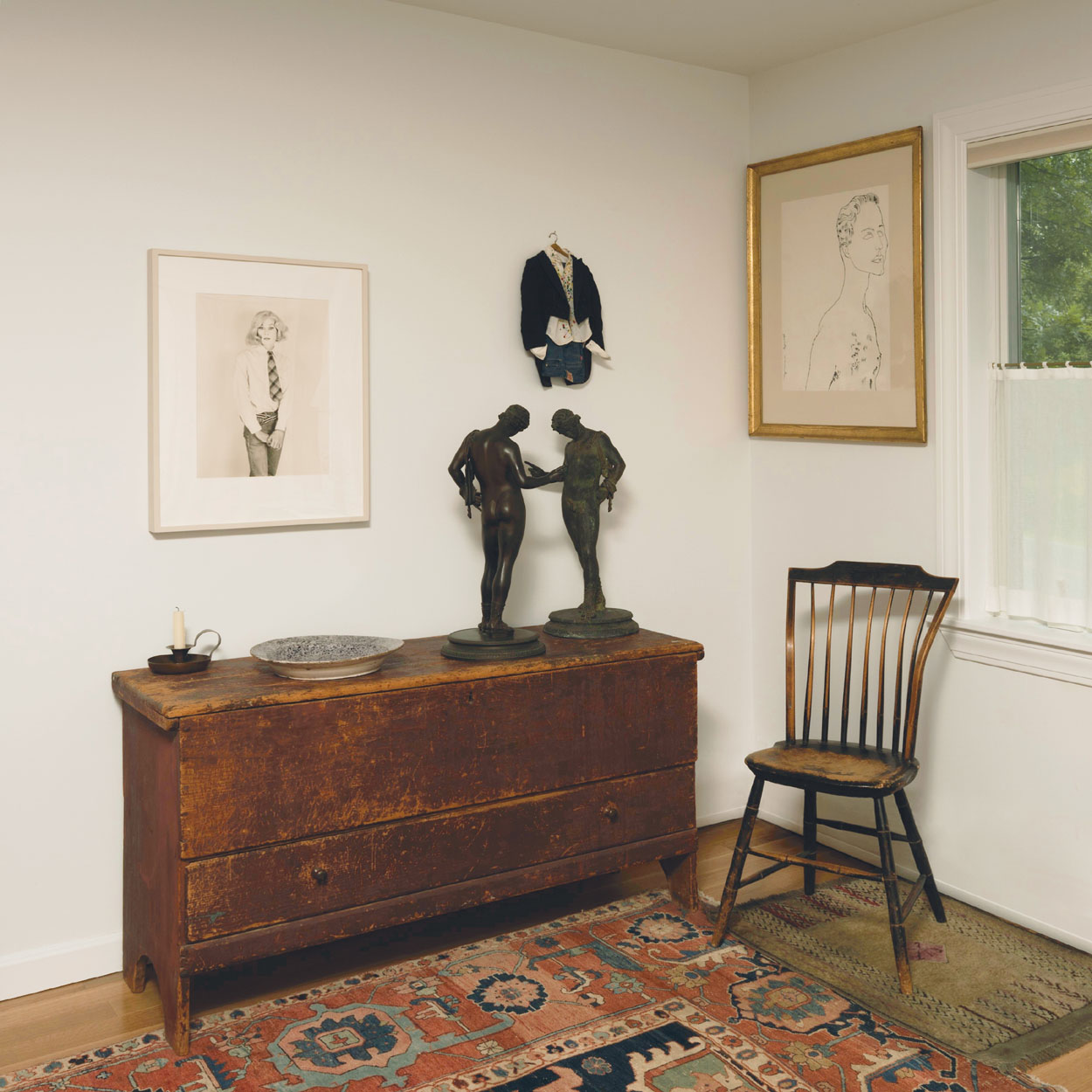A certain fatigue has set in in some quarters of the collecting world. The primitive country furniture that seemed so radically new and of the moment in 1975 can feel anachronistic now, static in a world that prizes mobility. An antidote to the ennui is provided by John T. Kirk, one of the Americana field’s original visionaries, and Trevor Fairbrother in their exquisite new book Collecting and Sharing. A companion exhibition of fine and decorative art from their collection is on view at Dartmouth College’s Hood Museum of Art through December 6. Fifty-two of the 140 pieces displayed are gifts from the couple, who chose Hood for its congenial scale and dynamic approach to teaching. Book and exhibition are organized by topics that have long fascinated the men: histories, wonders, goods, marks, males, geometries and surfaces. The last, surfaces, is especially associated with Kirk, with whom we recently spoke.

“Portrait of Two Gentlemen (John T. Kirk, with hand of Trevor Fairbrother)” by David McDermott (b 1952) and Peter McGough (b 1958), 1989, oil on linen.
Beginning with his 1975 book The Impecunious Collector’s Guide to American Antiques, Kirk, who held influential posts at Yale, RISD Museum and Boston University, taught us to admire undisturbed finishes for what they say about our eternal duet with time. From a pair of blown-glass bottles, a youthful purchase by Kirk, to a fluid Warhol ink on paper, there is a sensuousness about this selection; a belief that line is head and heart made material; and a conviction that all art, even the turned leg of a dressing table, must be experienced to be understood. Inspired by the New Hampshire dealer Roger Bacon, among others, Kirk developed a talent for seeing. His message then and now is that, if we open our eyes to it, we will discover the extraordinary in what may, at first glance, seem ordinary.
What unites these disparate objects?
The link is looking and understanding. I’ve always been interested in who made it and how, and in what it looks like now. In the contemporary realm, we grew to understand the hand, mind and materials of people making fine art.
How did you and Trevor negotiate differences in taste?
There is no negotiation. We buy because we both want to live with it.
In 1975, you urged collectors to, as you put it, “buy it ratty and leave it alone.” Have we gotten there yet?
Yes. I think we got there a lot. If you watch Antiques Roadshow you know that that copper Tiffany piece would be worth much more if you hadn’t touched it.
But don’t museums live by a different standard?
Yes. It would be very strange to go into the new Art of the Americas wing at the MFA Boston with all those varnished and gold-framed things and see something unframed, dry and hanging by a thread. So there is a dilemma.
Doesn’t the Hood Museum face certain issues in the way it treats your gifts and loans?
It’s true. We framed a lot of things in unfinished maple because we like the way maple ages around a work of art. But that means handling the frame with white gloves because there is no varnish to keep the maple from getting marked. We always wear gloves if we deal with anything that is white or any frame that is unvarnished. We don’t do that with furniture because it is well aged.
What would excite you if you were a young curator starting out?
I can’t imagine not thinking about how it was made and what it has become.
Are you a connoisseur or a material culturalist?
I’ve always had problems with the material culture term because I don’t know how it is different from art history. What was going on economically? What was going on socially? Was it a rural or urban community? It seems to me those are all art history questions. For me, one informs the other. It is looking and seeing.
Why the Hood Museum?
It is a teaching museum. Students handle real things. If you have a small Kline painting instead of a giant one, it’s useful here. The Hood is the right scale for our things.
Are you happy with the exhibition and book?
Putting up the show has been marvelous. It’s an extraordinary space and the objects make sense here. We are wildly happy with the book. It’s very beautiful. It juxtaposes things that you wouldn’t normally juxtapose. That’s the way we live. Things aren’t isolated. A Warhol hangs over a ratty chest or several.
Has your taste changed over the years?
No. Wonderful things are still wonderful.


